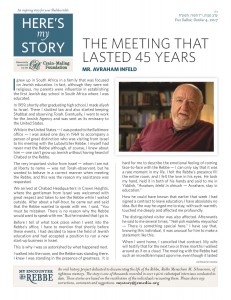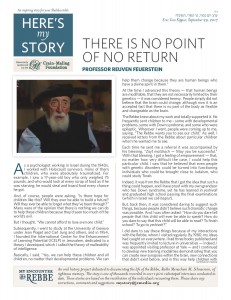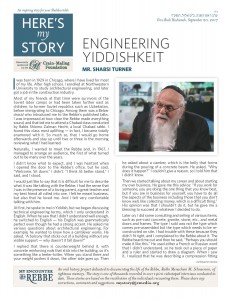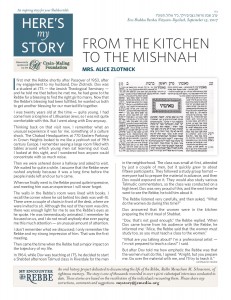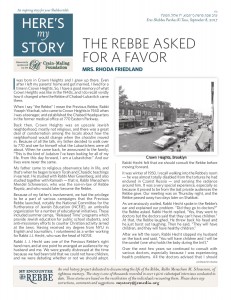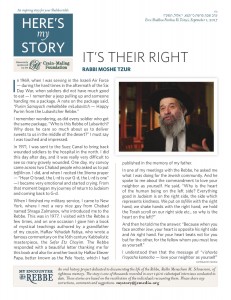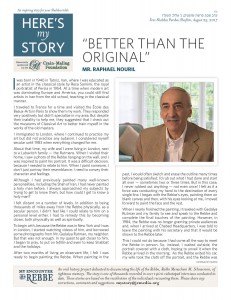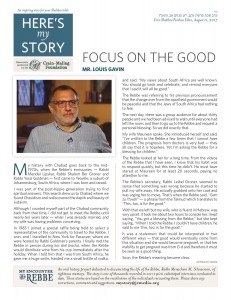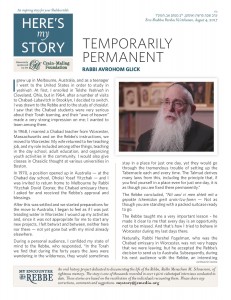The Meeting that Lasted 45 Years
I grew up in South Africa in a family that was focused on Jewish education. In fact, although they were not religious, my parents were influential in establishing the first Jewish day school in South Africa where I was educated.
In 1959, shortly after graduating high school, I made aliyah to Israel. There I studied law and also started keeping Shabbat and observing Torah. Eventually, I went to work for the Jewish Agency and was sent as its emissary to the United States.
While in the United States – I was posted to the Baltimore office – I was asked one day in 1969 to accompany a person of great distinction who was visiting from Israel to his meeting with the Lubavitcher Rebbe. I myself had never met the Rebbe although, of course, I knew about him – one can’t grow up Jewish without having heard of Chabad or the Rebbe.
The very important visitor from Israel – whom I am not at liberty to name – was not Torah-observant, but he wanted to behave in a correct manner when meeting the Rebbe, and this was the reason my assistance was requested.
We arrived at Chabad Headquarters in Crown Heights, where the gentleman from Israel was welcomed with great respect and taken to see the Rebbe while I waited outside. After about a half-hour, he came out and said that the Rebbe wanted to speak with me. I said, “You must be mistaken. There is no reason why the Rebbe would want to speak with me.” But he insisted that I go in.
Before I tell of what took place when I went into the Rebbe’s office, I have to mention that shortly before these events, I had decided to leave the field of Jewish education and had accepted a position to run a new start-up business in Israel.
This is why I was so astonished by what happened next.
I walked into the room, and the Rebbe was standing there. I knew I was standing in the presence of greatness. It is hard for me to describe the emotional feeling of coming face-to-face with the Rebbe – I can only say that it was a rare moment in my life. I felt the Rebbe’s presence fill the entire room, and I felt the love in his eyes. He took my hand, held it in both of his hands and said to me in Yiddish, “Avraham, bleibt in chinuch – Avraham, stay in education.” (more…)


